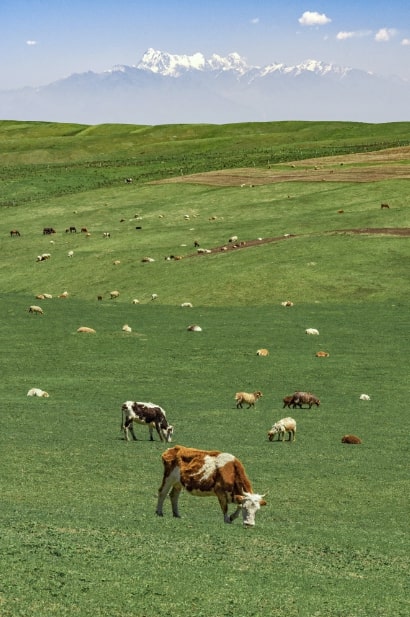One of the trickiest things in autumn is to maximise animal health and protect soil in pastures. There are a couple of crucial things to think about, including grazing, ground cover, and parasites. We want to have a look at some of the most important points here, so read on to learn more about what you should be doing.
Overgrazing
You’ll see different animals in fields throughout much of autumn, including sheep and cows. Farmers generally bring them in towards the end of November, or into early December if the weather is still mild. This gives them protection against the harsh winter cold.
The most important thing here is to ensure that animals are getting good forage in the pastures. This provides a large percentage of their diet. However, because the growth rate of grass starts to slow, you need to prevent overgrazing. If you don’t monitor things, you could cause soil damage.
A key thing to look at is ground cover. You shouldn’t let animals overgraze a pasture to the point where bare soil is visible. If you do, you can have major problems with erosion and nutrient loss. There are some crucial things to think about here, including stocking numbers (avoid overstocking). Ideally, you should be using pasture scoring to evaluate the quality of the forage. When scores drop, particularly with sward height, you should move to a new pasture.
Rotation
The foundation of good autumn grazing is to rotate pastures effectively. It can improve animal health, protect the soil, and boosts sustainability. Make sure you carefully monitor the conditions in a paddock. Move the animals efficiently to give time for grass to recover. In addition, keep in mind that the longer animals stay on a paddock, the more harm they can cause in terms of soil compaction. There is a higher risk of this in autumn if the ground is wet and soft.
Rotating pastures also provides a big advantage for parasite control. The more time animals spend in a paddock, the higher the burden for worms and flukes. So, moving them regularly, especially to paddocks that haven’t been used in the current grazing season, can really help.
Mixing species
One of the best things you can do if you want to utilise pastures efficiently is to mix species. Different parasites target cows and sheep. So, mixing herds or putting sheep on a pasture previously used by cows can help to break up the life cycles.
Mixed grazing also offers big benefits for soil and pasture health. Most importantly, it reduces the chance of selective grazing and ensures more even pasture wear. Plus, you can enjoy a big improvement in forage efficiency. Ultimately, it can help improve biodiversity in the pastures too.
The right tools to improve animal health
JS Hubbuck Ltd appreciates that there are lots of different factors to consider when it comes to farming. It can often be a careful act of balancing animal and pasture health. This is especially important in autumn.
We’re proud to help farmers get the best results for their herds and land. We have all kinds of useful resources, including feeds, wormers, and much more. We’ve got a great reputation for providing products to improve animal health and offering vital details to ensure farmers use them correctly. So, contact us if you need any help.

